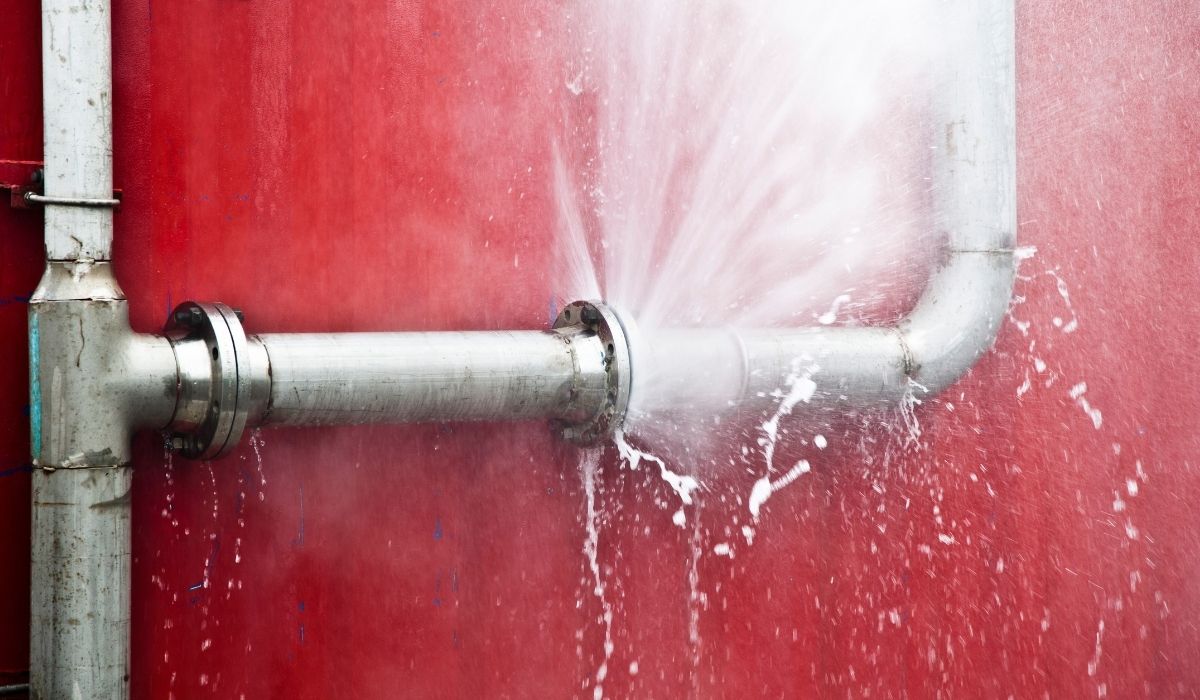How to Efficiently File a Water Damage Claim in Orange County

How to File a Water Damage Claim in Orange County
In Orange County, water damage claims can be both overwhelming and confusing for homeowners facing property damage from floods, leaks, or sewer backups. Understanding your insurance policy, the types of water damage covered, and the step-by-step claim process is essential for ensuring that you receive proper reimbursement and repair services. This article explains how to file a water damage claim in Orange County in detail, offering guidance on everything from documenting damage to negotiating with adjusters. Homeowners are encouraged to prepare a detailed record of the incident, secure emergency repair services if needed, and clearly understand the nuances of deductibles, policy limits, and hazard exclusions.
The purpose of this article is to break down the process into manageable steps so that you can confidently progress from assessing your damage to finalizing a settlement. With increasing risks associated with natural disasters like flash floods and heavy rains in Southern California, having an actionable plan for filing claims is more than just a precaution—it’s a necessity. This comprehensive guide is designed for homeowners dealing with water damage issues, whether caused by appliance leaks, heavy rain, or plumbing failures. In the pages that follow, each stage of the claim process is discussed in precise detail with relevant statistics, industry best practices, supportive scientific studies, and illustrative tables and lists to help you navigate your insurance policy effectively.
Transitioning into the main content, we will start by understanding the specifics of your insurance policy and how various factors like deductibles and exclusions can affect your claim.
Understanding Your Orange County Water Damage Insurance Policy

For homeowners in Orange County, understanding an insurance policy is the first crucial step in managing water damage claims. The policy details what types of water damage are insured—ranging from burst pipes to accidental overflows—and provides specific information about deductibles, policy limits, and coverage exclusions. A comprehensive water damage policy often includes information about hazards caused by natural events such as heavy rain or flash floods, as well as accidental appliance failures that lead to significant water damage.
Identifying Covered Water Damage Types in Orange County
Homeowners should carefully review their policies to identify which water damage events are covered. Generally, water damage due to sudden and accidental incidents is covered, including pipe bursts, accidental appliance failures, and leaks. However, gradual issues like mold growth or water damage caused by neglect may be excluded from coverage. It is important to note that certain policies may require separate endorsements or additional premiums for coverage of flood damage or sewer backups. For example, many standard homeowner’s insurance policies exclude flood damage from storms and require the purchase of a National Flood Insurance Program (NFIP) policy for proper coverage.
Furthermore, understanding the language used in policy documents is essential to avoid confusion. Terms such as “sudden and accidental” versus “gradual damage” play a pivotal role in determining claim eligibility. Consulting with an insurance agent or lawyer specializing in water damage claims can offer clarity on these terms and ensure that the policy is fully understood before a claim is filed.
Reviewing Policy Limits and Deductibles for Orange County Claims
The deductible is the initial amount a homeowner is responsible for paying before the insurance coverage begins. In Orange County, deductible amounts often vary depending on the cause of the water damage. For instance, claims related to sudden pipe bursts may have a different deductible compared to damage from a flash flood. Policy limits outline the maximum amount that the insurer will pay per claim or for the entire policy period. It is essential for homeowners to verify that these limits are sufficient to cover the total repair and restoration costs.
For example, if water damage from a broken appliance results in extensive damage to hardwood floors and ceiling structures, the deductible and policy limit could significantly affect the reimbursement amount. Homeowners are advised to maintain receipts and detailed invoices for repairs, as proper documentation can be instrumental in ensuring that claims do not fall below the necessary repair threshold.
Recognizing Exclusions in Your Orange County Water Damage Insurance
Every insurance policy carries exclusions—specific conditions or damage types not covered under the policy. Common exclusions may include water damage due to maintenance issues, mold resulting from prolonged leaks, or damage resulting from natural flooding events unless additional coverage has been purchased. In Orange County, where water management is a critical aspect of home maintenance, understanding these exclusions can save time and prevent potential disputes with insurers.
For instance, if the water damage is a result of poor maintenance resulting in seepage from a deteriorating roof, the insurer may deny the claim citing negligence. It is essential to document regular maintenance and repair work, as this information may help counter arguments of neglect. Reading through the fine print and even seeking legal advice if necessary will help ensure that homeowners are not caught off guard by exclusion clauses that might affect their claim.
Understanding Specific Orange County Flood Insurance Requirements
In regions prone to heavy rains and flash floods, such as Orange County, flood insurance might be a separate requirement. Standard homeowner’s policies may not cover flood damage; hence, obtaining a separate flood insurance policy becomes necessary. The flood insurance policy typically covers structural damage, personal property damage, and additional living expenses if the home becomes uninhabitable. Flood policies also contain separate deductibles and limits that the homeowner should understand clearly.
Moreover, understanding elevation certificates and mapping designations by FEMA can play a crucial role in determining premiums and claim benefits under a flood insurance policy. Homeowners are advised to consult with an insurance expert or a public adjuster to determine the specifics of flood coverage and to ensure compliance with county regulations and FEMA requirements.
Key Takeaways: – Your policy specifies which water damage types are covered and which are excluded. – Deductible amounts and policy limits directly impact the reimbursement you receive. – Exclusions, particularly for gradual damages or maintenance issues, are critical to understand. – Flood insurance is often a separate requirement in disaster-prone areas like Orange County.
Initiating the Water Damage Claim Process in Orange County
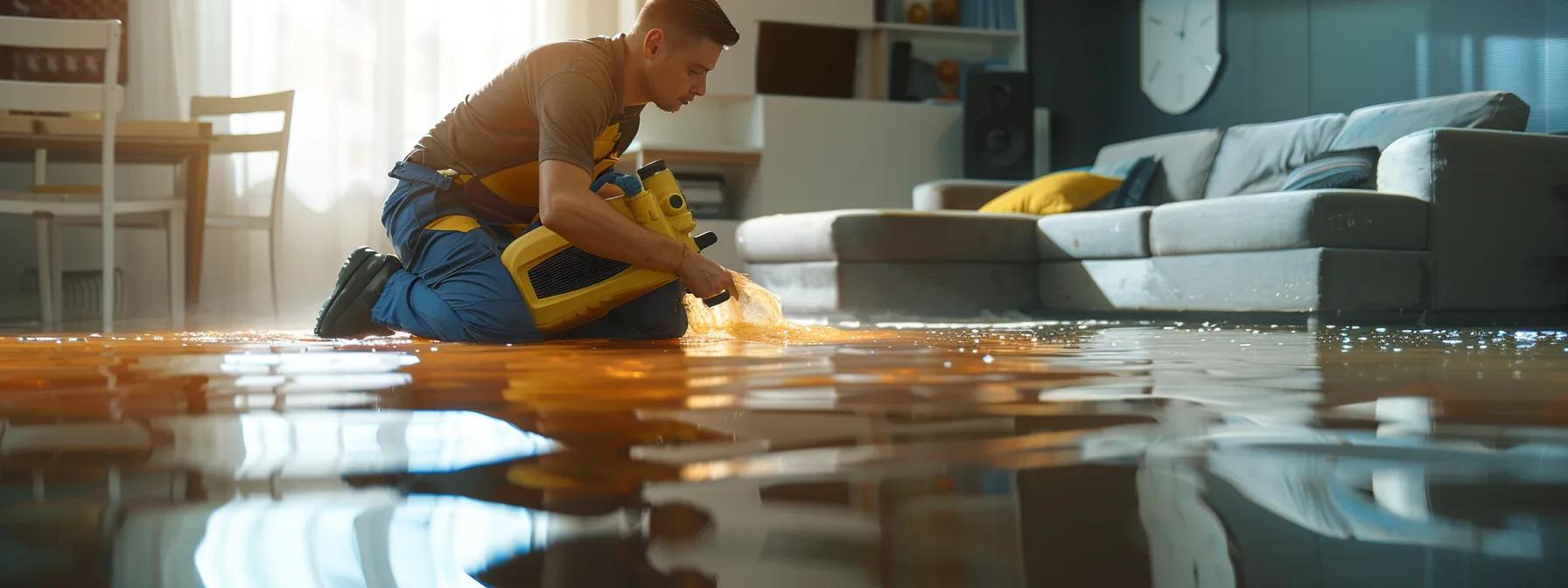
Once you understand your Orange County insurance policy, the next phase involves initiating the claim process. Prompt action is critical in preventing further damage and ensuring that all relevant information is documented accurately for submission. Homeowners must take immediate steps to mitigate the water damage, document everything thoroughly, and notify their insurance provider as soon as possible. This proactive approach helps to establish a clear timeline and streamlines the assessment process.
Taking Immediate Steps to Mitigate Further Water Damage
When a water damage incident occurs, immediate action is necessary to prevent secondary damage. This includes shutting off the water supply to the affected area, moving valuable items to safer locations, and employing temporary repairs such as sandbagging or tarping over flooded sections. Engaging qualified emergency services for water extraction or contacting a professional plumber can help minimize additional hazards like mold growth or structural damage.
Immediate mitigation not only limits the total damage but also serves as mandatory documentation for your claim. Insurance adjusters will expect evidence of prompt action and temporary repairs. It is advisable to keep receipts and document every expense related to these emergency actions because such costs are eligible for reimbursement. The faster these steps are taken, the more likely it is that insurers will honor your claim and process reimbursements under the terms of your policy.
Homeowners should also be cautious about self-repair attempts that might worsen the situation or invalidate their claim. A careful balance between urgent mitigation and professional intervention is necessary to maximize the coverage benefits from an insurance claim focused on water damage.
Documenting the Water Damage Thoroughly With Photos and Videos
Proper documentation is arguably the single most crucial step in filing a water damage claim. Photographs and videos of the affected areas provide indisputable evidence of the extent of damage. These should be taken as soon as it is safe to do so, capturing wide shots of affected rooms as well as close-ups of specific damage—such as warped flooring, soaked drywall, or damaged electrical outlets. An organized set of visual records can significantly enhance your claim by providing clear evidence to support the description of the incident.
In addition to visual documentation, keeping a detailed written log of the timeline and each step taken to address the damage is critical. Include the date and time when the damage was first noticed, signifying any professional evaluations that were conducted, and recordings of phone calls or written communication with repair services. This comprehensive evidence substantiates your claim and aids in reducing disputes with the insurer over the reported extent of the damage.
Multiple lists can be drawn up to organize this documentation. For example, consider a list of all damaged items, including the estimated cost of repair or replacement for each, as well as a chronological timeline detailing emergency actions taken immediately after the incident occurred. These elements bolster your claim and demonstrate responsible property management to both the insurer and any potentially involved legal entities.
Contacting Your Orange County Insurance Provider Promptly
Early communication with your insurance provider is crucial. Once you have taken emergency measures and begun documenting the damage, call your insurer immediately to report the claim. This early engagement has several benefits: it provides an initial record of the incident, helps to set the claim process in motion, and ensures that the insurer is aware of the situation while evidence is fresh. It also positions you as a proactive policyholder who is compliant with the terms of your insurance agreement.
When contacting your insurer, have your policy number and a summary of the incident ready. Clearly explain the extent of the damage and the steps already taken to mitigate further losses. It is advisable to speak directly with a claims representative who can guide you through the process and provide details on any additional steps required for evidence submission. Utilize clear and concise language in your communications to avoid misunderstandings and to ensure that every detail is recorded accurately in the claim file.
Additionally, many insurance companies provide online claim submission portals that can further streamline this process. Using digital tools to submit your claim, along with digital copies of your documentation, can expedite evaluation and lead to faster resolution times. Make sure to keep a record of all communications, including emails and call logs, to build a favorable narrative for your claim.
Providing Accurate and Detailed Information for Your Claim
Accuracy in the information provided is critical to avoiding delays or claim denials. Ensure that every detail of the incident—from the exact time and cause of the water intrusion to the list of damaged items—is documented accurately. Homeowners must also include estimates for repair work or restoration services, as these figures will be scrutinized during the claim process.
A spreadsheet that includes every damaged component, repair bills, and corresponding dates can serve as a useful tool. This organized record not only streamlines your submission but also helps determine whether the claim amount falls within the limits defined by your policy. Precision and transparency signal to the insurer that you are a credible and responsible policyholder, which may, in turn, speed up the settlement process.
Errors or inconsistencies in the information provided can lead to discrepancies that might result in claim denials or lower settlement offers. Therefore, taking the time to verify every detail, including consulting with professionals for repair estimates, is essential for achieving a favorable outcome.
Key Takeaways: – Immediate mitigation and thorough documentation are vital to preserving evidence of water damage. – Promptly contacting your insurer creates an official record and speeds up claim processing. – Accurate, detailed information, supported by organized documentation like spreadsheets, improves chances of a full reimbursement. – Early communication and digital submission strengthen your case with the insurance provider.
Working With Insurance Adjusters on Your Orange County Claim
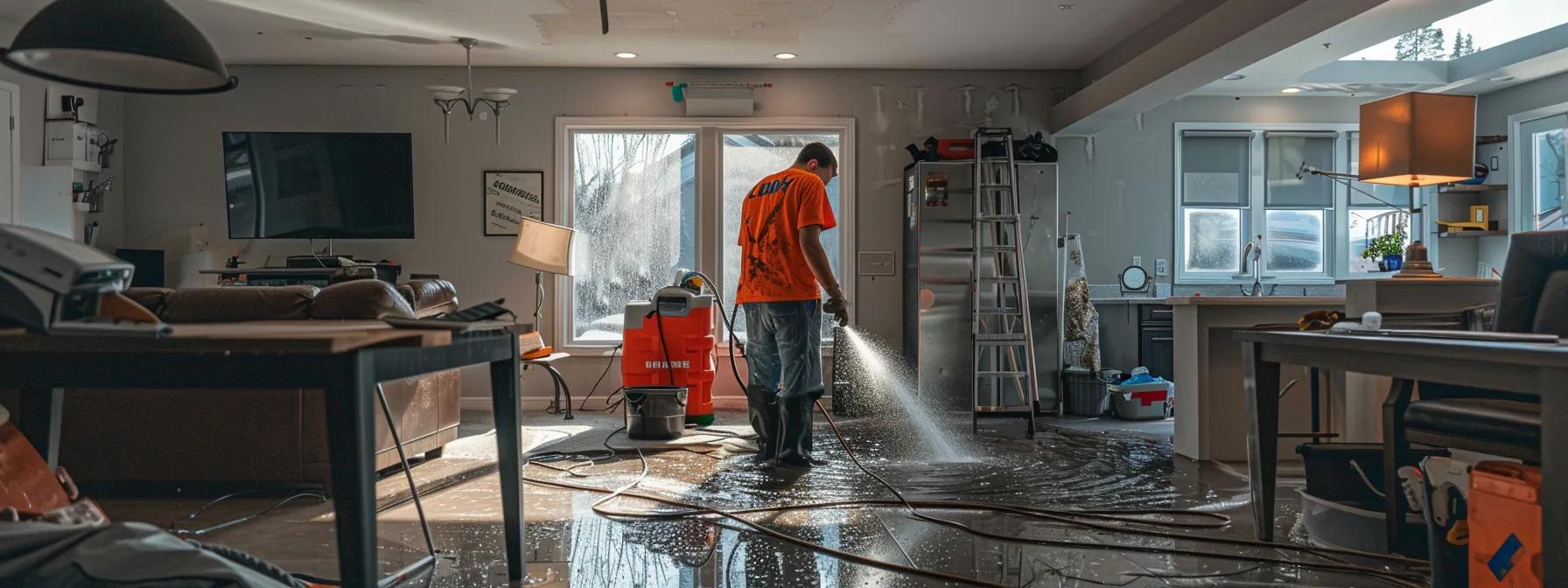
Once your water damage claim is initiated, the next step involves working closely with the assigned insurance adjuster. The adjuster plays a key role in assessing the damage, determining the value of the claim, and negotiating a settlement. It is crucial for homeowners to prepare thoroughly for the adjuster’s visit to ensure that every aspect of the damage is documented and evaluated correctly. Cooperation and clear communication with the adjuster can influence the speed and fairness of the claim resolution process.
Preparing for the Orange County Insurance Adjuster's Visit
Before an insurance adjuster arrives, homeowners should compile and organize all relevant documentation. This includes a complete set of photographs and videos, a detailed written log of the incident, repair estimates, electrical or plumbing reports, and any other evidence that substantiates the amount of damage incurred. Such preparation not only streamlines the adjuster’s work but also helps mitigate any discrepancies or misunderstandings regarding the claim.
Homeowners are advised to perform a walkthrough of the damaged areas with the adjuster, pointing out every detail of the affected property. It is beneficial to have notes prepared in advance, highlighting recurring issues like dampness in walls, compromised flooring, or potential mold hazards. Additionally, requesting a copy of the adjuster’s report after the inspection can provide clarity and allow you to understand the valuation framework applied to your claim. This documentation can later be used for negotiations if the settlement offer is lower than expected.
Furthermore, during the preparation phase, it might be helpful to consult with a public adjuster or legal expert. These professionals can offer insights into common pitfalls, suggest strategies for presenting evidence, and even negotiate directly with your insurance company to ensure that you receive a fair settlement. Their expertise may be particularly valuable if the initial claim amount offered by the insurance company is insufficient compared to the actual repair costs.
Communicating Effectively With the Adjuster
Effective communication is paramount when dealing with insurance adjusters. Homeowners should provide clear, concise, and factual responses to any questions during the adjuster’s assessment visit. Avoiding speculation and sticking to documented facts and evidence can help build a strong case. It is also important to remain calm and composed, as a cooperative and respectful demeanor can facilitate a smoother review process.
Organize your documentation into categories, such as structural damage, personal property loss, and emergency repair expenses. When discussing these categories with the adjuster, referencing specific dates, amounts, and supporting documents simplifies their evaluation. For example, citing a repair estimate for a damaged ceiling along with an accompanying photograph will reinforce the legitimacy of your claim. As the conversation progresses, confirm that the adjuster has noted all points of damage and ask for clarifications if any aspects of their report seem ambiguous or incomplete.
Maintaining regular follow-up communication after the initial visit further ensures that your claim stays on track. Written records of your discussions—preferably via email—provide a paper trail that can be invaluable if disputes arise later in the process.
Understanding the Adjuster's Role in the Claim Process
Insurance adjusters are professionals whose primary responsibility is to evaluate the extent of your water damage and negotiate a settlement that is consistent with your policy’s coverage. They amalgamate your submitted documentation, conduct physical inspections, and reference policy terms to determine an appropriate payout. Their expertise can be both beneficial and challenging: while they help streamline the claim process, their assessments are also designed to minimize payouts for the insurance company.
Understanding that adjusters follow standardized procedures and often have targets for settlement amounts can help homeowners calibrate their expectations. Awareness of the adjuster’s methods—such as verifying repair estimates against industry averages and factoring in depreciation—allows policyholders to prepare counterarguments backed by detailed, professional repair evaluations when necessary.
Having a third party, like a public adjuster or legal advisor, review the adjuster’s report can provide an independent assessment. If significant discrepancies are found between your documentation and the adjuster’s report, homeowners can challenge the assessment and potentially recalibrate their settlement offer.
Obtaining a Detailed Copy of the Adjuster's Report
After the adjuster’s visit, it is critical to request a complete copy of their report. This report should include all observations, details of damage assessments, and the preliminary settlement calculations. Reviewing this document closely allows you to identify any errors or omissions that may have reduced your estimated claim amount. If discrepancies are evident, supplement your report with additional evidence or seek professional assistance to challenge the findings.
The report not only serves as a basis for subsequent negotiations but also strengthens your position if you decide to involve a lawyer or public adjuster. It provides a clear, itemized breakdown of what the adjuster considers covered and what is categorized as depreciation or non-covered damage. Ensuring that every detail from your original documentation is reflected in the report is essential for receiving a fair settlement.
Key Takeaways: – Proper preparation before the adjuster’s visit improves the credibility of your claim. – Organizing evidence into clear categories facilitates effective communication with the adjuster. – Understanding the adjuster’s role and obtaining a detailed report can help identify discrepancies. – Involving public adjusters or legal professionals may improve settlement outcomes.
Key Insurance Claim Tips for Orange County Residents

Navigating the insurance claim process in Orange County can be a complex undertaking, especially for those unfamiliar with the intricacies of water damage and policy terminology. However, by following a few essential tips, homeowners can improve their chances of receiving a fair settlement and expedite the repair process on their homes. The key lies in meticulous record-keeping, proactive communication, and understanding your rights as a policyholder.
Maintaining Detailed Records of All Communications
Keeping detailed records is fundamental when dealing with insurance claims. Every phone call, email, and written correspondence with your insurance company should be documented. This comprehensive record should include dates, times, names, and the specifics of each conversation. Maintaining such an archive not only helps you track the progress of your claim but also serves as evidence in case of disputes regarding the comprehensiveness or accuracy of your submitted information.
A well-maintained spreadsheet or logbook can be an invaluable tool. The log should list: 1. Date and time of contact 2. Name of the representative spoken to 3. Summary of the discussion 4. Any follow-up actions requested
This documentation will be especially useful if there are delays, inconsistencies, or if an adjuster raises questions about the timeline of events. Detailed records can provide clarity during negotiations and may help identify any deviations from standard claim procedures.
Keeping Receipts for All Repairs and Related Expenses
Another essential tip for Orange County residents is to keep all receipts for emergency repairs and salvage operations. Water damage can affect multiple areas of a home—from structural components to personal belongings—and it is crucial that every small expense is verified. Receipts for services like water extraction, temporary housing, repair estimates from contractors, and even the cost of renting pumps or dehumidifiers should be collected diligently.
These receipts not only validate your expenses but also provide a clear, itemized breakdown to support the dollar amounts claimed. Many insurance companies require detailed proof of expenditure before authorizing a payment, so having an organized binder or folder with all receipts is highly recommended. In some cases, contractors or public adjusters may assist in compiling these details into a comprehensive document, which can then be submitted with your claim.
Understanding Your Rights as an Orange County Policyholder
Homeowners must be proactive in understanding their rights under the terms of their insurance policy. It is essential to review policy documents thoroughly and not hesitate to ask questions whenever ambiguities arise. Knowing your rights can empower you to dispute lower settlement offers or to file an appeal if your claim is unfairly reduced or denied.
Familiarize yourself with state-specific regulations that protect homeowners, such as guidelines on claim response times, proper payment processes, and the rights to an independent appraisal if disagreements arise. In many cases, consumer advocacy groups or legal services specializing in insurance claims offer free consultations that can help clarify these rights. Being informed not only improves your ability to negotiate a fair settlement but also reduces the likelihood of insurance fraud or misinterpretation of your policy coverage.
Seeking Professional Assistance if Needed for Your Claim
Sometimes, the process of filing a water damage claim becomes too overwhelming for an individual homeowner. In situations where disputes occur or the damages are extensive, seeking professional assistance from a public adjuster or an attorney who specializes in water damage claims can be tremendously beneficial. These experts not only have experience negotiating with insurance companies but also carry a deep understanding of policy language and claim valuation.
Hiring a public adjuster, for example, can provide an unbiased assessment of the damage and ensure that every expense is accounted for in the final claim. Additionally, retaining legal counsel can help in cases where there is a significant discrepancy between your documentation and the insurance company’s assessment. Although these services come with additional costs, their expertise often results in a higher settlement, which can offset the expense in the long run.
Key Takeaways: – Detailed records of all communications ensure that every discussion is documented for reference. – Keeping receipts for repairs substantiates reimbursement requests with numerical evidence. – Understanding your rights strengthens your position in case of disputes over the claim. – Professional assistance from public adjusters or legal advisors can help maximize your settlement.
Common Challenges in the Orange County Water Damage Claim Process
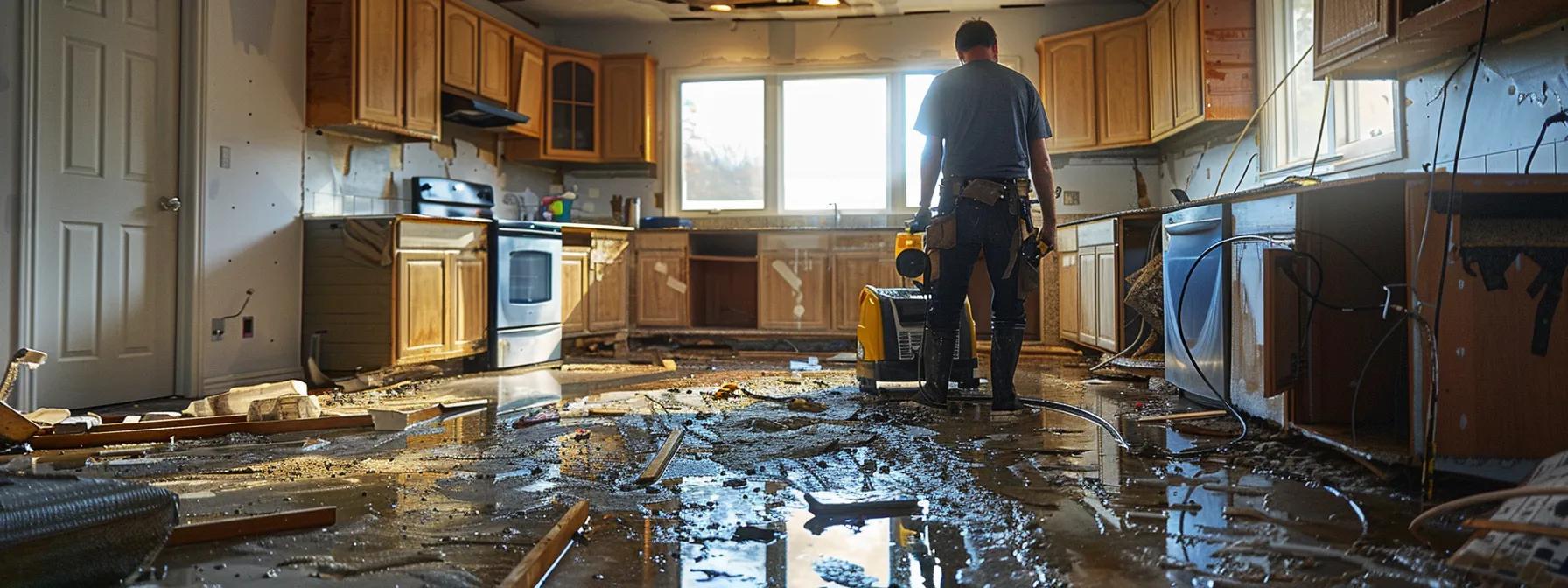
Despite thorough preparation, homeowners in Orange County often face several challenges when navigating the water damage claim process. These challenges can delay the settlement, result in lower payouts than expected, or even lead to denials. Understanding what obstacles may arise allows policyholders to prepare more effectively and strategize for potential disputes. Key issues include delays in processing claims, low initial settlement offers, disputes over repair estimates, and disagreements about the extent of damage.
Dealing With Claim Delays or Denials in Orange County
One of the most common frustrations faced by homeowners is the delay in processing water damage claims. Claim delays can occur due to high claim volumes, incomplete documentation, or disputes over policy terms. In some cases, delays may be exacerbated by the need for additional inspections or documentation from third-party repair companies.
If your claim has been delayed, it is essential to follow up regularly with your insurance provider, maintain detailed logs of every communication, and politely insist on updates. In the event of a denial, reviewing the denial letter carefully is critical to understand the insurer’s rationale. Often, denials occur because of technicalities—such as missed deadlines or ambiguous policy terms—that can be rectified by providing additional documentation or seeking an independent re-assessment.
Some homeowners have successfully appealed denials by obtaining a second opinion from a public adjuster or by gathering more comprehensive evidence to counter the insurer’s findings. Understanding that delays and denials might be part of the process, and being prepared to address them with persistence and professional assistance, is a key element in navigating these challenges.
Disputing Low Settlement Offers From Your Insurer
Another frequent challenge is receiving a settlement offer that is significantly lower than the actual costs of repairs and restoration. Insurers use a variety of methods to determine settlement amounts, which may include depreciation factors, reduced estimates, or incomplete assessments of damage extent. It is not uncommon for homeowners to feel that the initial offer does not adequately cover the incurred losses.
Dispute strategies include providing independent repair estimates, submitting additional photographic evidence, and clearly outlining all expenses through detailed spreadsheets. If necessary, engaging the services of a public adjuster who can advocate on your behalf may help reframe the value of your claim. The goal is to ensure that every aspect of the damage is accounted for fairly and that the final payout aligns with the actual cost of restoration.
Disputing low offers can be a time-consuming process, but being well-prepared with organized documentation greatly strengthens your position. Additionally, homeowners should familiarize themselves with the appraisal process provided for in many policies. This process allows for an independent third-party arbitrator to resolve disputes if the insurer and homeowner cannot agree on the claimed amount.
Addressing Issues With Repair Estimates or Contractors
Inaccurate repair estimates or disputes with contractors present another major challenge for homeowners. Errors in initial estimates can lead to disagreements about the true cost of repairs, and some contractors may provide overly conservative or inflated figures. These discrepancies may cause delays or lead to a lower than expected settlement.
To mitigate this, homeowners should consider obtaining multiple repair estimates from reputable contractors. This comparative approach not only provides a more accurate average cost but also strengthens your argument if a single estimate is challenged. Documenting every piece of correspondence with the contractors, including detailed notes on discussions of repair timelines and materials, remains essential.
If contractor estimates vary widely, it may be necessary to enlist an independent contractor or a restoration expert to provide a professional evaluation. This extra step can help resolve any disputes and ensure that the settlement reflects the true scope of the repairs needed.
Understanding the Appraisal Process for Disagreements
When disagreements about repair costs or settlement amounts cannot be resolved through initial negotiations, many policies offer an appraisal process as a final avenue. This process involves selecting an independent appraiser who evaluates the damage and provides an unbiased estimate. Both the insurer and the homeowner typically choose separate appraisers, and if a discrepancy remains, an umpire may be brought in to make a final determination.
The appraisal process is governed by terms outlined in your policy, including time frames and procedural requirements. Homeowners should carefully review their policy to understand how to initiate this process and what documentation is required. Although the appraisal process offers an opportunity for a fairer assessment, it can also be lengthy and may incur additional fees. Therefore, it is often used as a last resort after all direct negotiation efforts have been exhausted.
Key Takeaways: – Claim delays and denials often arise from technicalities and incomplete documentation. – Disputing low settlement offers requires comprehensive repair estimates and professional advice. – Multiple repair estimates and clear documentation ensure that repair costs are accurately reflected. – The appraisal process serves as a final measure to resolve disputes with insurers.
Finalizing Your Orange County Water Damage Insurance Settlement

The final phase of the water damage claim process in Orange County is the settlement stage, during which homeowners review and negotiate the insurance payout and finalize repairs. At this point, it is crucial to carefully examine the settlement offer, understand the terms of liability release, and ensure that all repairs can be effectively initiated. This stage requires vigilance and a proactive approach to make sure that the final settlement is fair and covers all incurred expenses.
Reviewing the Settlement Offer Carefully
Once the insurance company presents a settlement offer, the homeowner’s responsibility is to scrutinize the document for accuracy and completeness. This involves checking that the offer accurately reflects all documented damages, emergency repair costs, and any additional expenses incurred due to the water damage incident. It is important to compare the settlement offer with your organized documentation, including repair estimates, expense logs, and the insurance adjuster’s report.
Homeowners should verify that the settlement does not fall short because it overlooked certain documented damages or depreciated repair costs inappropriately. In some cases, the offer might exclude specific items that were substantial in the initial assessment. If such errors are detected, the homeowner must request an adjustment. Detailed records and clear communication with the insurer, along with professional opinions if needed, can reframe the offer into one that more accurately reflects true repair costs.
Negotiating a Fair Settlement for Your Water Damage
Negotiation is a key part of the settlement process. If the initial settlement offer does not adequately cover the repair costs, homeowners should be prepared to negotiate. This often involves providing additional evidence, obtaining new expert opinions, or citing industry standards to justify a revised claim amount. Professional advocates such as public adjusters or attorneys can be instrumental in this process, as they offer neutrality and specialized knowledge that enhances your negotiation stance.
Approach negotiations with a clear understanding of the minimum amount necessary to restore your property. A detailed spreadsheet outlining all repair costs, combined with additional repair estimates, can effectively support your negotiation. It is important to remain patient and persistent during this phase, as insurers may initially offer lower amounts in an attempt to reduce payout costs. In many cases, a few rounds of negotiations are required before arriving at a fair and satisfactory settlement that covers all aspects of the water damage.
Understanding the Release of Liability Document
A critical component of finalizing a settlement is the release of liability document. This document is signed by the homeowner once the insurer agrees to the settlement amount, effectively closing the claim process. It is crucial that homeowners thoroughly review this release before signing, as it legally absolves the insurer of any further liability regarding the incident. Understanding every clause and term in this release protects the homeowner from future disputes related to the same incident.
Prior to signing, it is advisable to consult with a legal advisor who can confirm that all damages and related expenses have been adequately covered by the settlement. The release should clearly state that all claims and disputes are resolved, and should not include any language that might later be interpreted in a way that limits your rights. If any portion of the document is unclear, request a detailed explanation from your insurance representative before proceeding.
Receiving Your Claim Payout and Commencing Repairs
After the release of liability is signed, the insurance company processes the final payout. Homeowners should receive the settlement amount via check or direct deposit, depending on the policy agreement. Once the funds are received, initiating repairs is the next crucial step. It is important to use reputable contractors and ensure that repairs are conducted according to industry standards and applicable building codes.
Before commencing repairs, review the repair invoices carefully to verify that all costs are included as per the agreed settlement. Regular updates and inspections during the repair process help to ensure that all aspects of the damage are addressed promptly and correctly. An organized repair plan, including a timeline and detailed scope of work, further guarantees that the process is smooth and that the property restoration remains on track with the settlement terms.
Key Takeaways: – Review settlement offers meticulously and ensure they reflect all documented damages. – Negotiation is essential if the initial offer is lower than the actual repair costs. – Understand and carefully review the release of liability before signing. – Once the final payout is received, initiate repairs promptly using reputable contractors.
| Aspect | Description | Key Benefit | Example/Value |
|---|---|---|---|
| Documentation | Detailed records including photos, videos, and repair estimates | Strengthens claim and aids negotiation | Repair spreadsheet |
| Immediate Mitigation | Actions taken to prevent further damage prior to filing claim | Reduces total damage and improves claim outcome | Emergency water shutoff |
| Adjuster Coordination | Preparation and communication with the insurance adjuster | Ensures accurate damage assessment | Detailed adjuster report |
| Settlement Review | Careful examination of the insurer’s offer | Helps identify underreported damages | Comparison with receipts |
| Negotiation | Actively challenging low offers and negotiating for full reimbursement | Leads to higher payouts and ensures fairness | Professional public adjuster |
Before finalizing repairs, homeowners should review the table above to ensure that every aspect of the claim process—from documentation to settlement negotiation—was followed meticulously.
Finalizing Your Orange County Water Damage Insurance Settlement: Additional Considerations
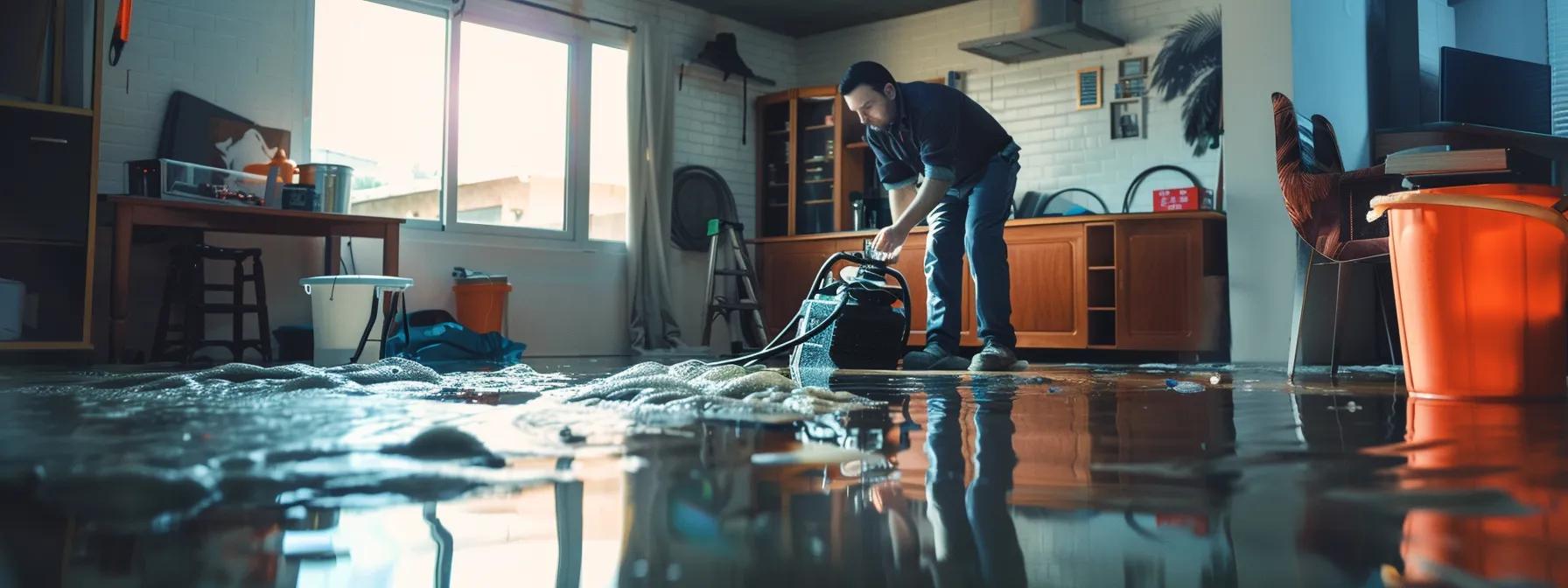
As the final stages of the settlement process draw to a close, homeowners must be highly attentive to any remaining details that can affect the overall outcome of their claim. Final discussions should include a thorough review of repair estimates, verification of reimbursement amounts, and proper handling of any outstanding disputes. Ensuring that all areas of water damage have been accurately assessed allows the homeowner to proceed with repairs confidently and securely.
In addition to negotiating the final settlement, homeowners should prepare for any small discrepancies that might arise during the repair process. For example, if additional damage is discovered during restoration that was not evident during the initial inspection, the homeowner should retain all new documentation and promptly communicate this to the insurer. Often, documented evidence of unforeseen damage can be appended to the original claim, allowing for an additional payout.
Insurance companies may also adjust the reimbursement based on factors like depreciation or the condition of the property prior to the incident. It is therefore essential that homeowners remain proactive and engaged even after the settlement is initially approved. Maintaining an ongoing dialogue with the insurer, and if necessary, with legal or public adjusters, is key to ensuring that the settlement remains fair and adequate throughout the repair process.
Finally, once all repairs are completed and the property is restored, homeowners should retain copies of invoices, receipts, and contractor agreements for future reference. Maintaining these records is crucial, as they protect against any potential future disputes regarding the value of repairs or additional damages that might surface after restoration.
Key Takeaways: – Final verification of repair estimates and settlement amounts is crucial. – Any newly discovered damage during the repair phase should be promptly documented. – Continuous communication with the insurer can manage and resolve any discrepancies. – Retaining all post-repair documentation safeguards against future disputes.
Frequently Asked Questions
Q: How quickly should I report water damage to my insurer? A: Report water damage immediately—ideally within 24 hours—to ensure that your claim is recorded while evidence is fresh. Prompt reporting also helps prevent further damage and meets the policy’s notification requirements.
Q: What types of water damage are typically covered by standard policies? A: Standard policies usually cover sudden and accidental water damage, such as burst pipes or appliance malfunctions. However, gradual damages like mold or water seepage due to neglect are generally excluded unless additional endorsements are purchased.
Q: How can I ensure my repair estimates are accepted by the insurer? A: Obtain multiple estimates from reputable contractors and maintain detailed documentation, including photos and receipts. This provides a strong basis for negotiation and helps ensure that the settlement accurately reflects actual repair costs.
Q: What should I do if my insurer’s settlement offer seems too low? A: Review and compare the offer against your detailed documentation and repair estimates. If discrepancies exist, dispute the offer by providing additional evidence or consulting a public adjuster or legal professional for negotiation support.
Q: Can I file for additional reimbursement if more damage is discovered during repairs? A: Yes, if unforeseen damage surfaces during repair, document it thoroughly and notify your insurer promptly. Additional claims may be supported if you provide new evidence and proper documentation to amend the original claim.
Q: What is the role of a public adjuster in this process? A: A public adjuster works on behalf of the homeowner to ensure that the claim is fairly assessed and well-documented. They can negotiate with the insurer to secure a higher settlement and help resolve disputes over repair costs.
Final Thoughts
Navigating a water damage claim in Orange County demands thorough preparation, accurate documentation, and proactive communication with your insurer. By understanding your policy details, working effectively with adjusters, and keeping impeccable records, homeowners can overcome common challenges and secure a fair settlement. Remember that professional assistance from public adjusters or legal experts can significantly bolster your claim and guarantee that all damages are covered appropriately. With these strategies in place, you can move forward confidently in restoring your home and safeguarding your investment.



